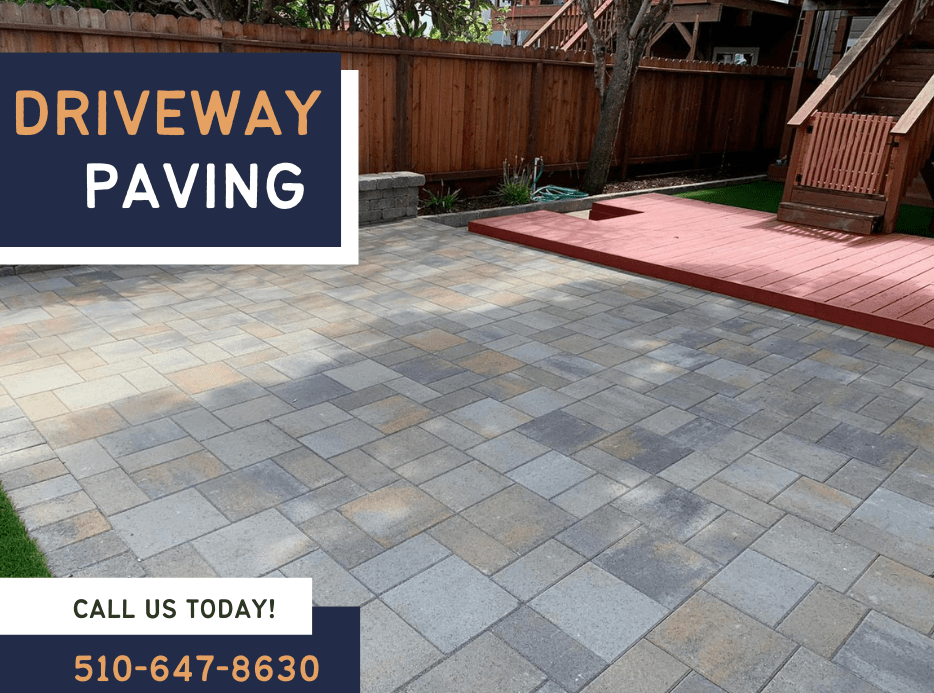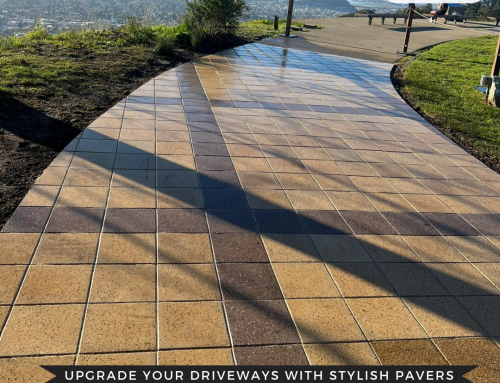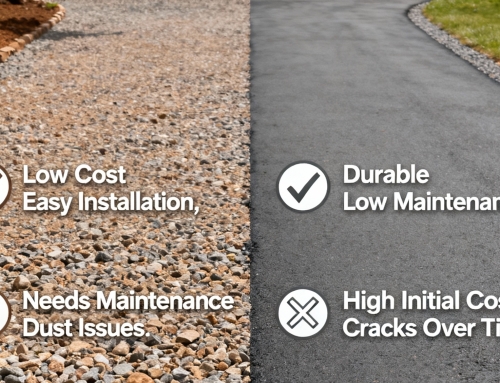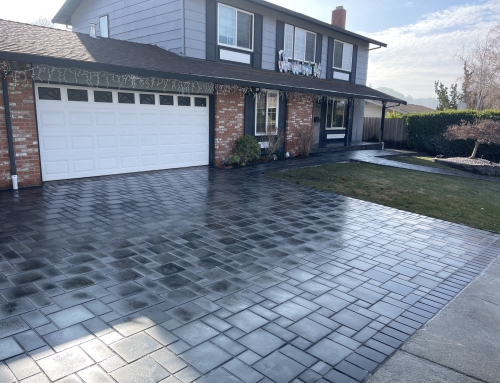When you’re planning a paving project, there are two key considerations: how to calculate the number of paving stones you’ll need and which type of stone is best suited for your needs. Whether you’re a homeowner looking to upgrade your outdoor space or a contractor managing a large-scale project, understanding these factors is critical for achieving long-lasting, aesthetically pleasing results.
In this blog, we’ll explore the process of calculating paving stones, the types of stones that work best for various applications, and how to choose a reputable paving stone contractor. So let’s dive into it!
How to Calculate Paving Stones for Your Project
One of the first steps in any paving project is determining how many paving stones you’ll need. Miscalculating can lead to material shortages or excess, both of which can be costly. But don’t worry, it’s simpler than you might think if you follow the steps carefully.
Step 1: Measure the Area to Be Paved
Before you can figure out how many paving stones to order, you need to measure the area you’re planning to pave. Whether it’s a driveway, patio, or walkway, make sure to measure the length and width of the space in feet.
If your area isn’t a perfect rectangle, break it down into smaller, measurable sections. For irregular shapes, you can use online tools or apps that calculate square footage based on irregular dimensions.
Step 2: Consider the Paving Stone Size
The size of the paving stones will have a huge impact on how many you need. Stones come in a variety of sizes, typically measured in square inches or square feet.
Let’s say you’re using 12-inch by 12-inch paving stones (which are 1 square foot each). You’ll need to divide your total area by the size of each paving stone.
If you’re using smaller or irregularly shaped stones, the calculation can be a bit more complex. For example, if your stones are 6 inches by 6 inches (or 0.25 square feet), your calculation would look like this:
Step 3: Account for Joint Space
Most paving stones are installed with gaps or joints between them, usually filled with sand or another material. These joints reduce the number of stones you’ll need slightly, but it’s always better to order a little extra material to account for waste, errors, and cutting stones to fit edges and corners.
Typically, contractors recommend ordering 5-10% more stones than your calculation suggests to cover these factors. For our example, if you need 200 paving stones, you’d order:
Step 4: Waste Factor
Another consideration is the waste factor. When cutting and shaping stones to fit your layout, you’ll inevitably lose some material. A good rule of thumb is to account for about 10-15% extra for waste. So, after accounting for joint spacing, if you calculated that you need 200 stones, you should add another 10-15% to cover waste.
Which Stone is Best for Paving?
Choosing the right stone for your project can be the difference between a functional, long-lasting surface and one that requires frequent repairs. Various types of stones are available, each with its own advantages and drawbacks. Let’s look at some of the most popular options:
1. Granite
Granite is one of the most durable paving stones available. Known for its strength and resistance to weather, it’s an excellent choice for high-traffic areas like driveways and walkways. Granite is also available in a variety of colors and textures, so you can match it to your home’s aesthetic.
- Pros: Extremely durable, weather-resistant, low-maintenance, variety of colors
- Cons: Higher cost compared to other stones, heavy, harder to install
2. Limestone
Limestone is another popular option for paving, especially in areas where aesthetics are important. It has a smooth, attractive finish and comes in various shades of white, grey, and beige. However, limestone is more porous than granite, making it less durable in extreme weather conditions.
- Pros: Smooth finish, beautiful natural color, easy to work with
- Cons: Porous, requires sealing, less durable than granite
3. Sandstone
Sandstone is widely used for patio pavers due to its natural beauty and relatively affordable price point. It offers a range of colors, from soft yellows to rich reds, and has a textured surface that provides excellent slip resistance. However, like limestone, it’s more porous and may not hold up well in freeze-thaw conditions.
- Pros: Natural beauty, variety of colors, affordable
- Cons: Porous, may wear down over time, needs sealing
4. Slate
Slate is another high-end option, known for its distinctive look and natural texture. It’s highly resistant to temperature fluctuations, making it a great choice for colder climates. However, slate can be brittle and may crack under heavy loads, so it’s not the best choice for driveways or high-traffic areas.
- Pros: Distinctive look, highly weather-resistant, good for cold climates
- Cons: Brittle, can crack, more expensive
5. Travertine
Travertine is a form of limestone but with a more textured appearance. It’s particularly well-suited for pool decks and patios because of its excellent slip resistance and ability to stay cool underfoot, even in hot weather. However, it requires regular maintenance to maintain its appearance and longevity.
- Pros: Slip-resistant, stays cool in heat, attractive
- Cons: Requires sealing, less durable than granite
Choosing the Right Contractor
Once you’ve decided on the type of stone, the next step is to choose a reliable contractor who specializes in paving stone installation. The right contractor can make all the difference, ensuring your project is completed on time, within budget, and to your specifications.
Here’s how to choose the best paving stone contractor:
1. Look for Experience
Paving stone installation is a specialized skill that requires experience. A contractor with a long history in the business will have the expertise to handle any issues that arise and ensure your project runs smoothly. Look for contractors who have been in the business for several years and have a portfolio of completed projects.
2. Check References and Reviews
Online reviews and references are valuable tools when assessing contractors. Check the contractor’s website for customer testimonials and reviews on platforms like Yelp or Google. You can also ask the contractor for references and reach out to past clients to get their feedback on the contractor’s work.
3. Verify Licensing and Insurance
Make sure your contractor is licensed to work in your area and carries appropriate insurance coverage. This protects you in case of accidents or damage during the project. A reputable contractor will have no problem providing proof of both.
4. Get Multiple Quotes
Don’t settle for the first quote you receive. Get at least three quotes from different contractors and compare the pricing, timelines, and scope of work. This will give you a better sense of the market rate and ensure you’re not overpaying.
5. Ask About Warranty
A good contractor will offer a warranty on their work. This ensures that if something goes wrong, like stones shifting or cracking, the contractor will fix the issue at no additional cost. Be sure to ask what’s covered under the warranty and for how long.
Conclusion
Choosing the right paving stones and calculating the amount you need are crucial steps for a successful paving project. Whether you opt for durable granite, smooth limestone, or affordable sandstone, the choice of stone should depend on the specific needs of your project and your budget.
Similarly, selecting a qualified paving stone contractor is key to ensuring your project runs smoothly and results in a durable, attractive surface that enhances your outdoor space. By following the guidelines in this article, you’ll be well-equipped to tackle your next paving project with confidence.
Now that you understand the basics of how to calculate the number of paving stones and which stones are best suited for different applications, you’re ready to make informed decisions that will enhance your property for years to come.







